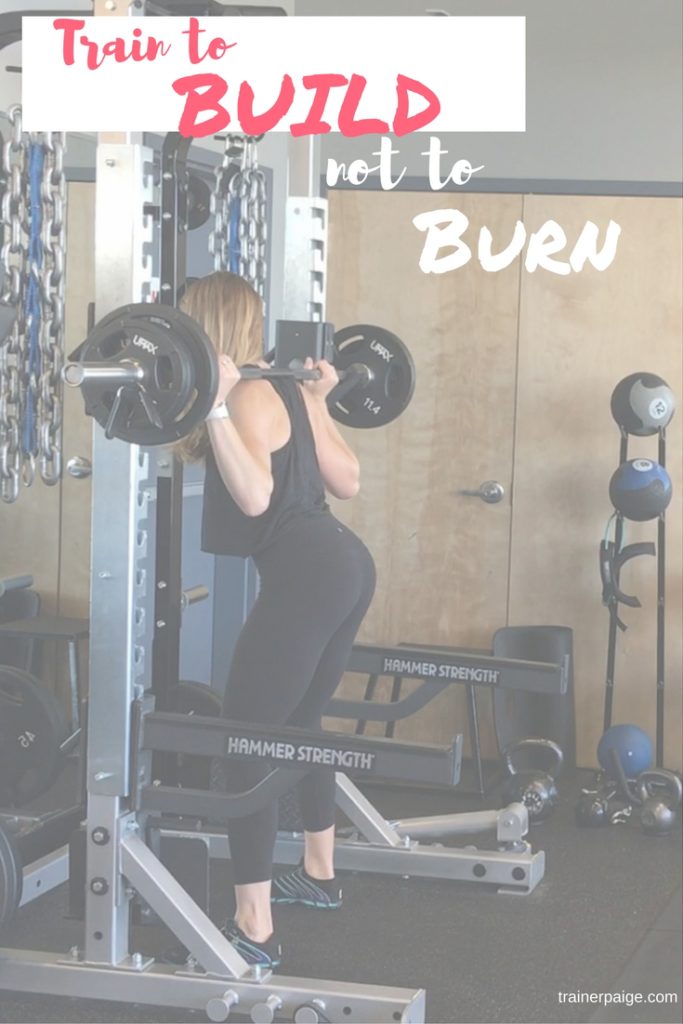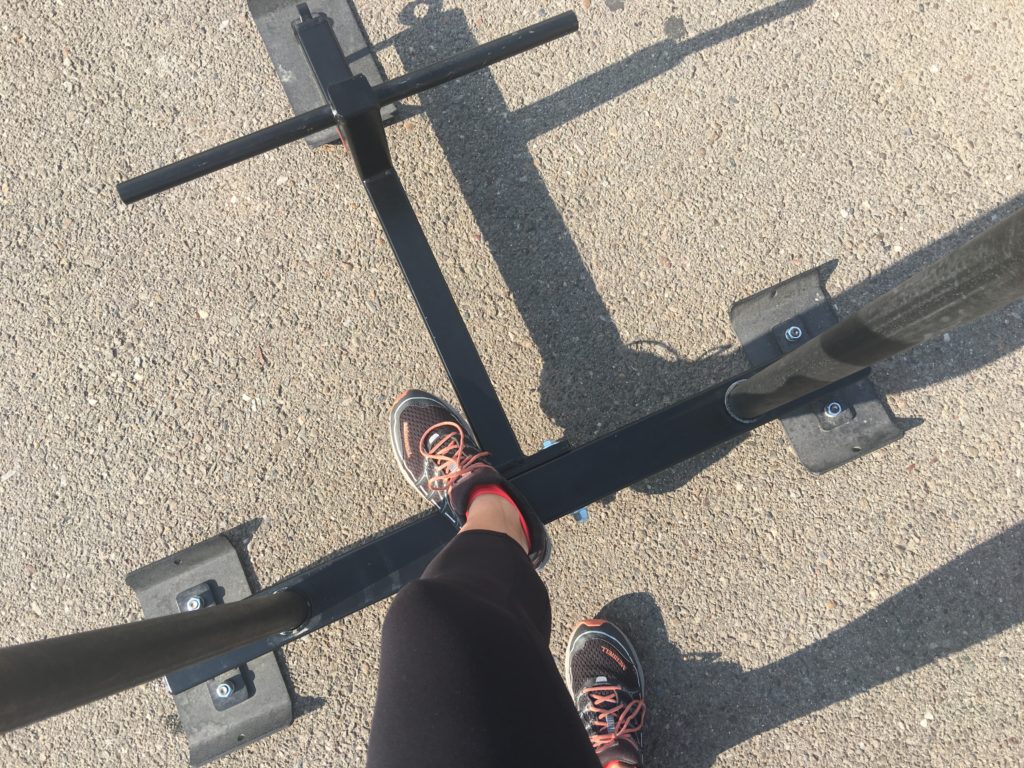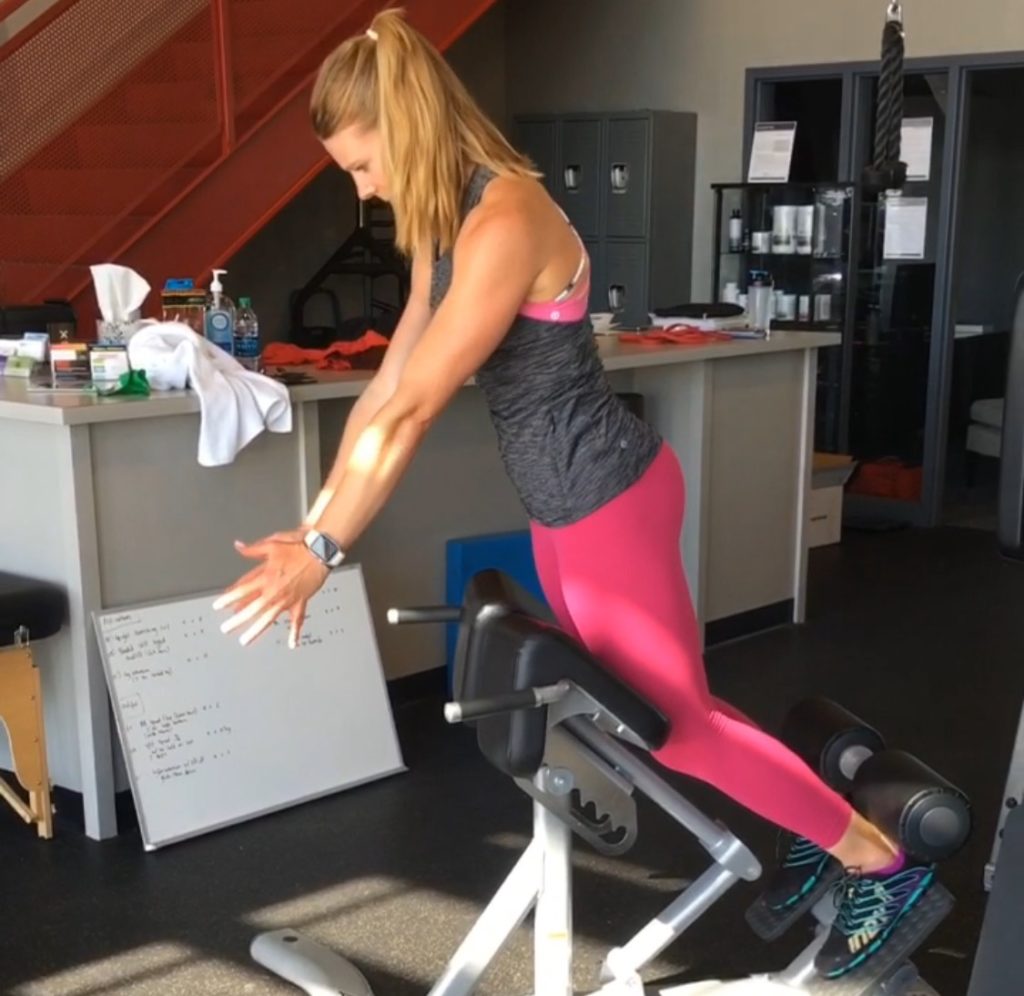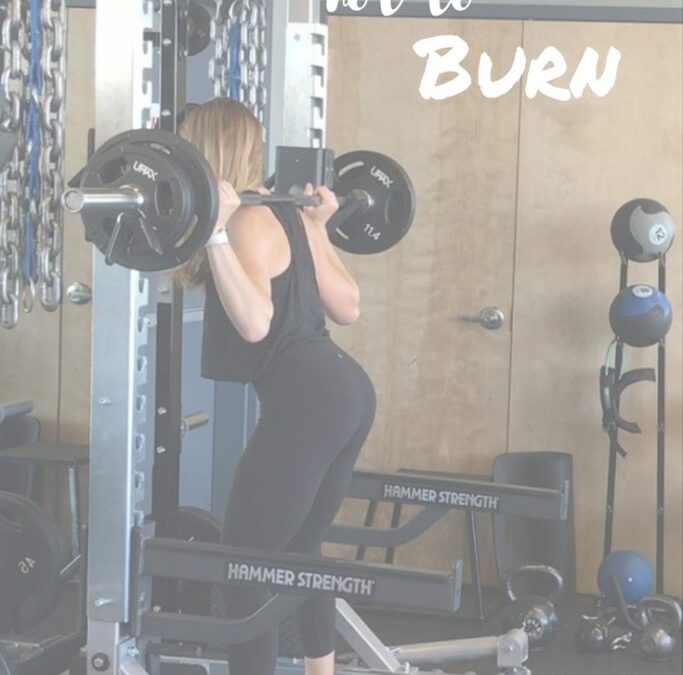Some thoughts and discussions from me.
Question: Why do you work out?
Unless you’re training for a sport, your answer likely has to do with staying or getting lean, staying or getting healthy, building muscle, or building strength.

The majority of the women I work with are looking to lose some body fat and get stronger – and that’s at the center of my wheelhouse when it comes to helping my clients get results. We all know that fat loss has to do with both nutrition and exercise, but one mistake many people make when setting out to achieve goals to lean out or lose body fat is equating exercise with calories burned.
Many of the women who initially come to me are doing cardio 5-6 days a week, but it isn’t helping them with their goals of getting leaner. It might be helping them be able to run for a really long time, but when it comes to physique, cardio is NOT king.
While I’m not part of the group who says any amount of cardio prevents fat loss – that’s just untrue – I do believe that our bodies can adapt to the amount of cardio we do. Basically, we become too efficient at running long distances for a long period of time without burning much fuel/body fat. Not to mention, excessive cardio can also lead to increased cortisol levels, which makes it even harder to lose body fat, especially in the mid-section.
A Case for Building Muscle
In fact, if a client comes to me wanting to lose body fat but also wants to train for a distance race, I typically ask them to choose one or the other, as it can be difficult to do both at the same time.
Instead focusing on burning calories, our training should focus on building and maintaining muscle. The more we build and maintain our muscle tissue, the higher our metabolic rate, the less likely we are to store fat, as well as a host of other beneficial health markers.

This is the main reason why strength training is the cornerstone in all of my clients programs. Sure – there are conditioning workouts included in the mix, but they’re mostly HIIT- or interval/metabolic-style workouts, and then some low intensity steady state mixed in when needed, depending on the client, etc.

Increased Appetite from Cardio
Moreover, when weight loss happens, if you’re consistently participating in a strength training program, you’re much less likely to lose muscle tissue, thus lowering your metabolic rate, than if you were doing primarily cardio.
Another reason is that all of that cardio can make a person HUNGRY! It’s much easier to begin, adhere to, and successfully comply with a solid nutrition plan for your goals when our appetite isn’t dictating our nutrition decisions. Studies show that higher intensity cardio like running increase appetite, as well as overall calorie consumption (but very low intensity, like walking does not.)
A Better Mindset
Lastly, and perhaps most importantly, equating fat loss with calories burned through exercise, in my opinion, is NOT the way we should be thinking to achieve healthy, sustainable, long-term fat loss.
Think about it:
Last night you eat more at that restaurant than you wanted to, so…
You go for a run, and tack on an extra mile at the end as “punishment” or to “burn it off”
Then, it makes you hungry, so that the lunch you packed doesn’t cut it, soo…
You grab a muffin from your co-worker’s desk, feel guilty, and feel like you need to “burn it off”
It can be a vicious cycle, and allows us to put exercise and our eating behaviors in too close of a category. We begin seeing exercise as punishment, when that’s not healthy at all.

Begin to view your training as a means to get you stronger, healthier, build muscle, and increase your metabolic rate and less of a means to “burn off” your food. Aside from helping to achieve your fat loss goals, you’ll also set yourself up for better health, better agility, and less risk of injury as we age.


So much great information here! A really helpful post!
Taylor Kiser recently posted…Vegan Mug Cake with Lemon Macaroons
I’ve definitely been working to help people understand this too! Distance racing and muscle building are two different paths, you can work on both, but to really get results need to pick a direction
I love hearing this. I do think cardio is important for overall health, but I’ve been focusing more on strength training lately and letting my cardio slip to the wayside a bit. Glad to know I might actually be on the right path! 🙂